Tilli Michelangelo
Catalogus Plantarum Horti Pisani, Firenze, Tartini & Franchi, 1723
Please scroll down for bibliographic information
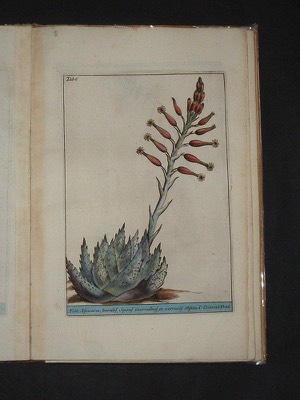
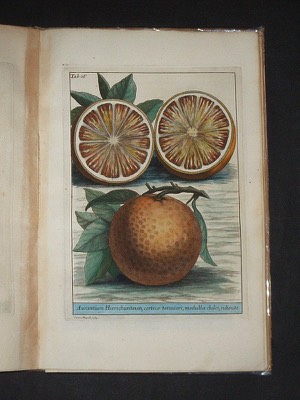
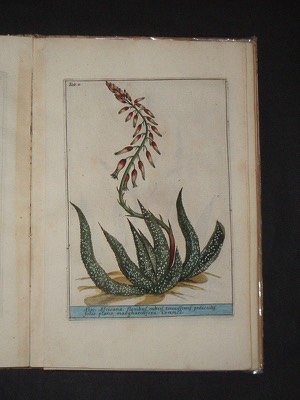
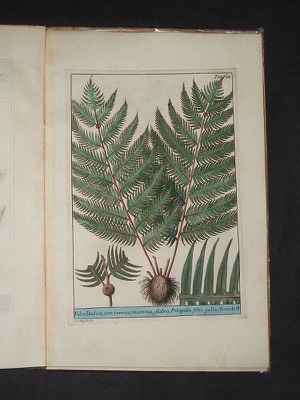
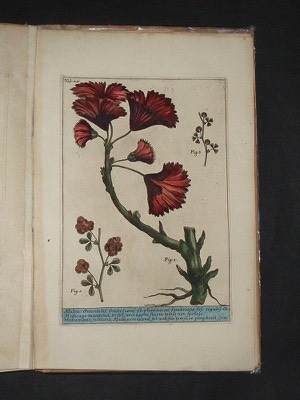
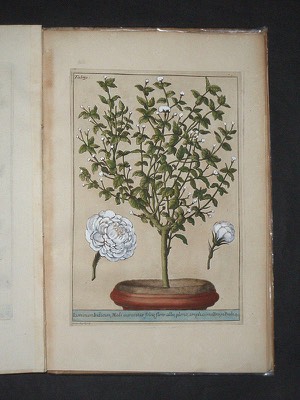
Tilli (Michelangelo)
Catalogus Plantarum Horti Pisani.
Published in Firenze, Stamperia Reale, Giovanni Gaetano Tartini e Santi Franchi, 1723. Folio. First edition. Half title, engraved portrait frontispiece of the author (Cruyffe after Redi), main title printed in red and black with a hand-colored engraved vignette, 2 folding engraved garden plans, 50 engraved plates by Mogalli after Tilli, colored by hand, contemporary editorial binding. "The Botanical Garden at Pisa was founded around 1543 and was (with that at Padua, 1545) one of the first such gardens in Europe... Thus the long alphabetical list of plants in this volume is one of the most important for the early eighteenth century, and the volume memorializes the garden for all time" (Hunt, 457).
The catalogue, listing more than 4 thousand plants, contains species of plants from all over the world. The volume is often said to describe the plants in the garden founded in 1543 by Luca Ghini, but actually describes the definitive garden, after its second relocation during the years 1591-1596, constructed by the Flemish gardener Jodocus de Goethuysen, who served the Medici family in Florence. A few leaves slightly browned. Michelangelo Tilli was born in Castelfiorentino in 1655. In 1677 he graduated in medicine at the University of Pisa and in 1681 was appointed as naval surgeon by Cosimo III. He embarked on a Tuscan galley for the Balearic Islands and went to Constantinople in 1683. From there he spent some time in Albania, and then he went on to Tunis to study the remains of Carthage and to collect botanical specimens. He became professor of botany at Pisa in 1685 and also director of the Botanical Garden of Pisa, introducing plants from Asia and Africa. He was among the first in Italy to use greenhouses for plants, making it possible to cultivate pineapples and coffee in Italy. He became a member of the Royal Society in 1708. Tilli died in Pisa in 1740 (cf. G. Cipriani, Michelangelo Tilli medico, naturalista e diplomatico fra Cosimo III e Giangastone de’ Medici, in: “Il trionfo della ragione: salute e malattia nella Toscana dell'età moderna”, Firenze, 2005, p. 129 e sgg.). Pritzel, 9356; Nissen, BBI, 1967; Olschki, Choix, 2488; Plesch, p. 228 (“La vignette de titre et les 50 planches ont été coloriées à l’époque!”); Catalogo unico, IT\ICCU\PUVE\000543; cf. F. Garbari-L. Tongiorgi Tomasi, Michelangelo Tilli e il Catalogus Plantarum Horti Pisani, in: M. Tilli, “Catalogus plantarum Horti pisani, Ristampa anastatica”, Pisa, 1991, pp. 1-11. Sold.
Catalogus Plantarum Horti Pisani.
Published in Firenze, Stamperia Reale, Giovanni Gaetano Tartini e Santi Franchi, 1723. Folio. First edition. Half title, engraved portrait frontispiece of the author (Cruyffe after Redi), main title printed in red and black with a hand-colored engraved vignette, 2 folding engraved garden plans, 50 engraved plates by Mogalli after Tilli, colored by hand, contemporary editorial binding. "The Botanical Garden at Pisa was founded around 1543 and was (with that at Padua, 1545) one of the first such gardens in Europe... Thus the long alphabetical list of plants in this volume is one of the most important for the early eighteenth century, and the volume memorializes the garden for all time" (Hunt, 457).
The catalogue, listing more than 4 thousand plants, contains species of plants from all over the world. The volume is often said to describe the plants in the garden founded in 1543 by Luca Ghini, but actually describes the definitive garden, after its second relocation during the years 1591-1596, constructed by the Flemish gardener Jodocus de Goethuysen, who served the Medici family in Florence. A few leaves slightly browned. Michelangelo Tilli was born in Castelfiorentino in 1655. In 1677 he graduated in medicine at the University of Pisa and in 1681 was appointed as naval surgeon by Cosimo III. He embarked on a Tuscan galley for the Balearic Islands and went to Constantinople in 1683. From there he spent some time in Albania, and then he went on to Tunis to study the remains of Carthage and to collect botanical specimens. He became professor of botany at Pisa in 1685 and also director of the Botanical Garden of Pisa, introducing plants from Asia and Africa. He was among the first in Italy to use greenhouses for plants, making it possible to cultivate pineapples and coffee in Italy. He became a member of the Royal Society in 1708. Tilli died in Pisa in 1740 (cf. G. Cipriani, Michelangelo Tilli medico, naturalista e diplomatico fra Cosimo III e Giangastone de’ Medici, in: “Il trionfo della ragione: salute e malattia nella Toscana dell'età moderna”, Firenze, 2005, p. 129 e sgg.). Pritzel, 9356; Nissen, BBI, 1967; Olschki, Choix, 2488; Plesch, p. 228 (“La vignette de titre et les 50 planches ont été coloriées à l’époque!”); Catalogo unico, IT\ICCU\PUVE\000543; cf. F. Garbari-L. Tongiorgi Tomasi, Michelangelo Tilli e il Catalogus Plantarum Horti Pisani, in: M. Tilli, “Catalogus plantarum Horti pisani, Ristampa anastatica”, Pisa, 1991, pp. 1-11. Sold.

